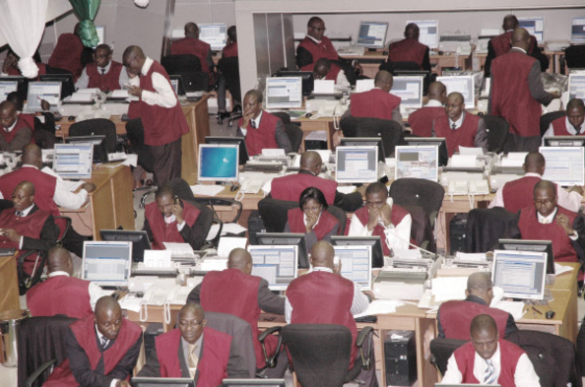Premium Index surpasses other indices with 6.50% ROI

A review of the performance of sectors on the Nigerian Stock Exchange (NSE) from the beginning of the year till December 23rd has turned out to be largely negative. However, the NSE Premium index defied challenges plaguing Nigeria’s economy, beating the NSE All-Share Index (ASI) to return 6.5 percent on investment.
Apart from the NSE ASI, which tracks the prices of all quoted companies on the NSE, the NSE premium index is one of 11 indices of the NSE, which tracks the value composition of three blue chip companies namely, Dangote Cement, Zenith Bank, and FBN Holdings.
It is the newest, launched in August 2015, alongside the premium board as a platform for showcasing companies who are industry leaders in their sectors.
While the NSE ASI has returned a negative year-to-date return of 7.53 percent, meaning that the average value of all quoted equities on the Nigerian bourse has depreciated by that much, a trend analysis on the subsequent sector indices conducted by the Daily Times has shown that the Premium and ASeM are the only indices with a positive year to date return of 6.75 percent and 0.81 percent respectively as at the period in review.
The Premium index that opened the year with 1584.41 points had added 107.53 basis points to stand at 1691.94 points as at 23rd December 2016.
The premium index was launched alongside the premium board to lists companies that meet the exchange’s most stringent criteria in terms of liquidity, capitalization and corporate governance.
The board which was developed as a means of attracting international investors who seek after high-quality listings in Africa currently holds three companies namely Dangote Cement, First bank of Nigeria (FBN) Holdings and Zenith International Bank.
The ASeM index as at reviewed period stood at 1,218.38 points, following an addition of 9.73 basis points from 1,208.65 points recorded in January. The Alternative Securities exchange Market (ASeM) Index monitors small, medium scale businesses on the NSE. It recorded its first listing after two years, of the Initiates Plc, in the month October, which contributed to the slight increase in the index that had remained flat in 24 months.
The ASeM was launched in 2013, as a vehicle designed to encourage listing of SMEs by easing the listing requirements relative to those of other sectors.
On the flip side of the analysis, The NSE Industrial Goods Index showed price decline in large-cap cement companies, recorded the highest negative return of -26.26 percent. The index opened the year with 2167.48 points and closed last week Friday at 1597.67 points.
This was followed by the NSE insurance Index that returned -13.79 percent, dropping 20.08 basis points from 143.03 points in January to 122.95 points,
The NSE Oil and Gas Index recorded a return of -11 percent, down to 317.35 points from 357.18 points recorded in January, showing a decline of 39.83 points, as the oil sector (downstream and upstream) struggles with foreign exchange scarcity to aid importation, vandalism, Niger Delta unrest as well as low global oil prices which persisted most part of the year.
Trailed by the NSE 30 Index, that returned -8.82 percent, having fallen by 98.09 points to 1,174.07 points from 1272.16 points it started the year with. The NSE 30 keeps track of NSE’s 30 most capitalized stocks.
Year-to-date returns of the NSE Lotus Islamic Index, an index that tracks sharia-compliant shares stood at -8.06 percent, the index fell 143.83 points to 1,837.70 points, while the NSE Consumer goods index returned -7.89 percent
The NSE Pension Index which is aimed at pension managers, tracks companies specially screened as a model portfolio for pension funds’ investments, recorded a negative return of -1.93 percent, as Banking Stocks tracked by the NSE banking Index, returned -0.59 percent, to stand at 266.91 points as at December 23rd.
With only three trading days left in the year 2016, the current performance, according to an analyst, is however not unexpected as the 2016 year has been characterized by challenges ranging from flailing crude prices, unstable macroeconomic and political conditions as well as the prevalent economic recession.







